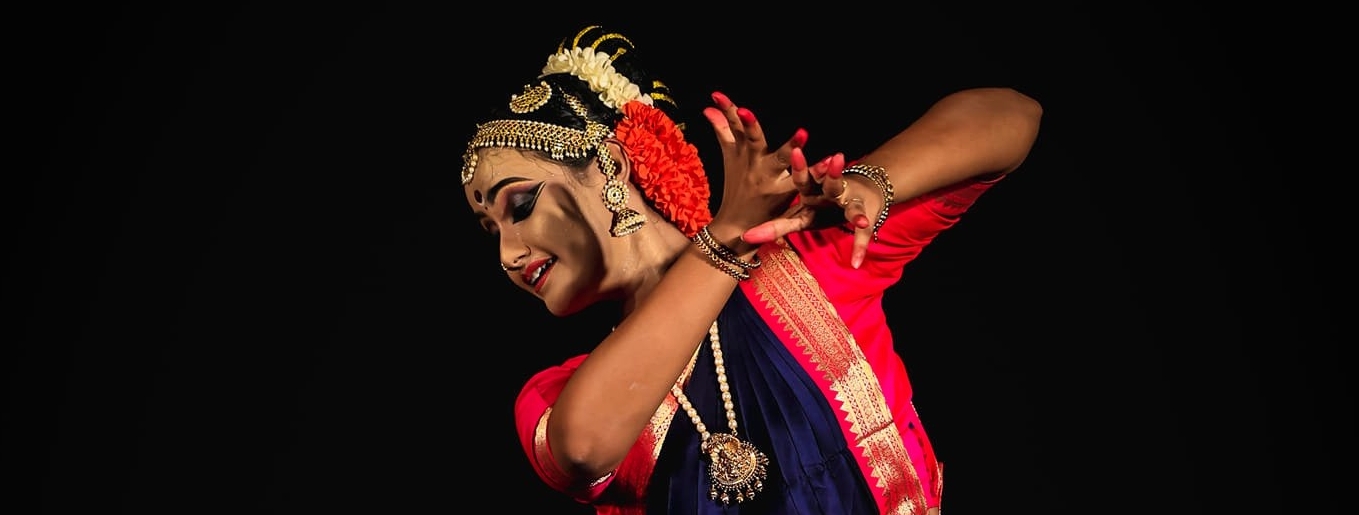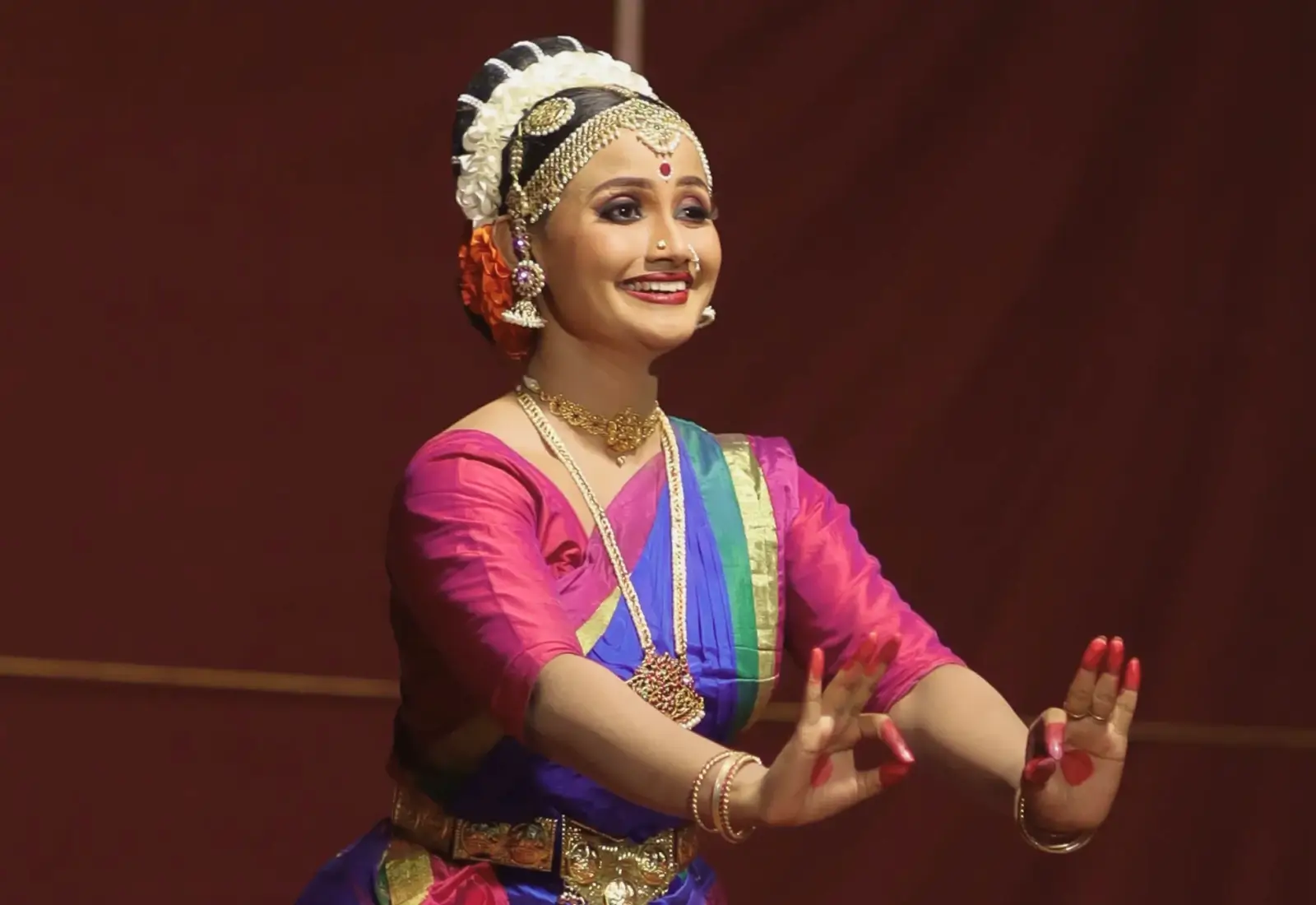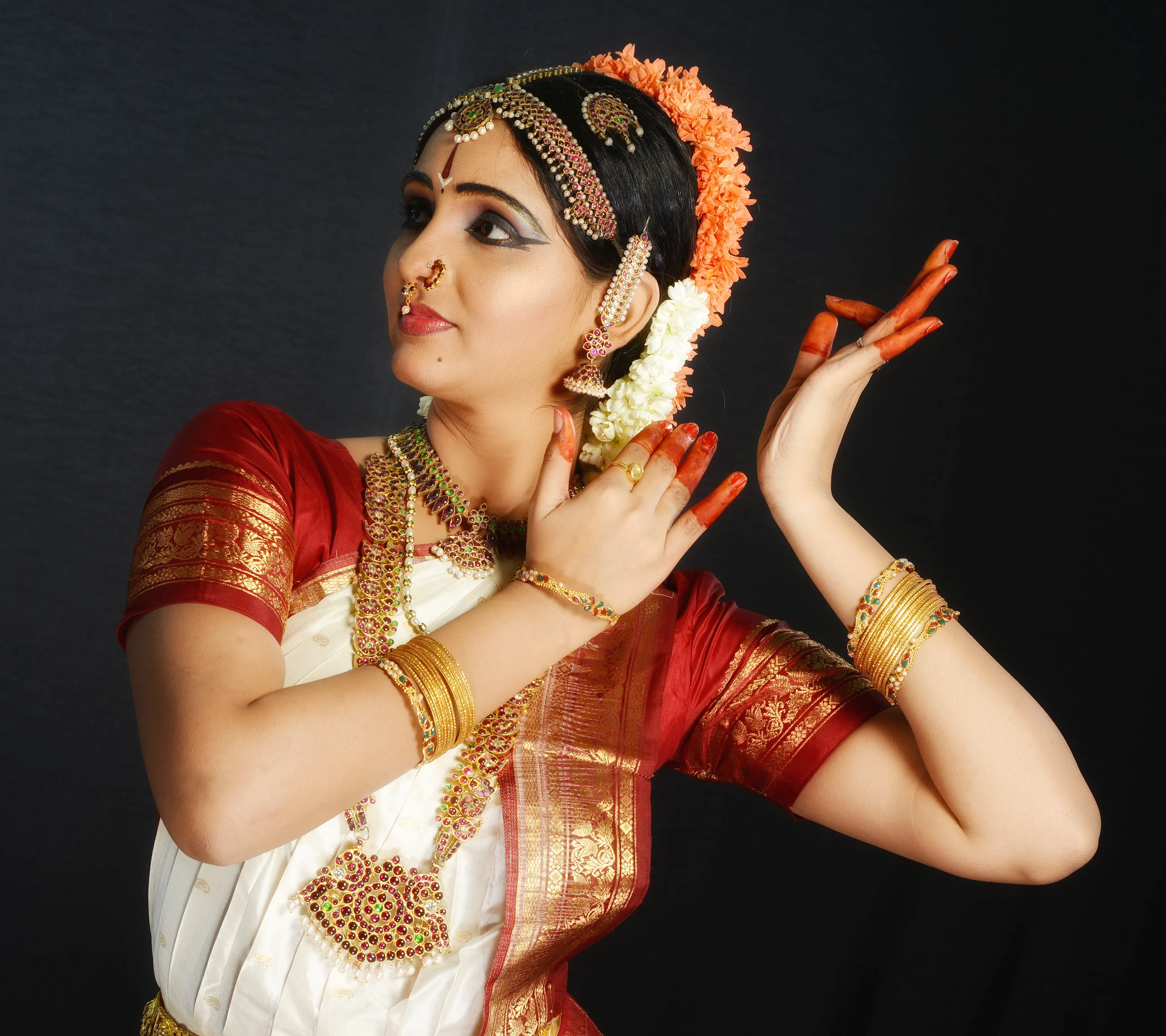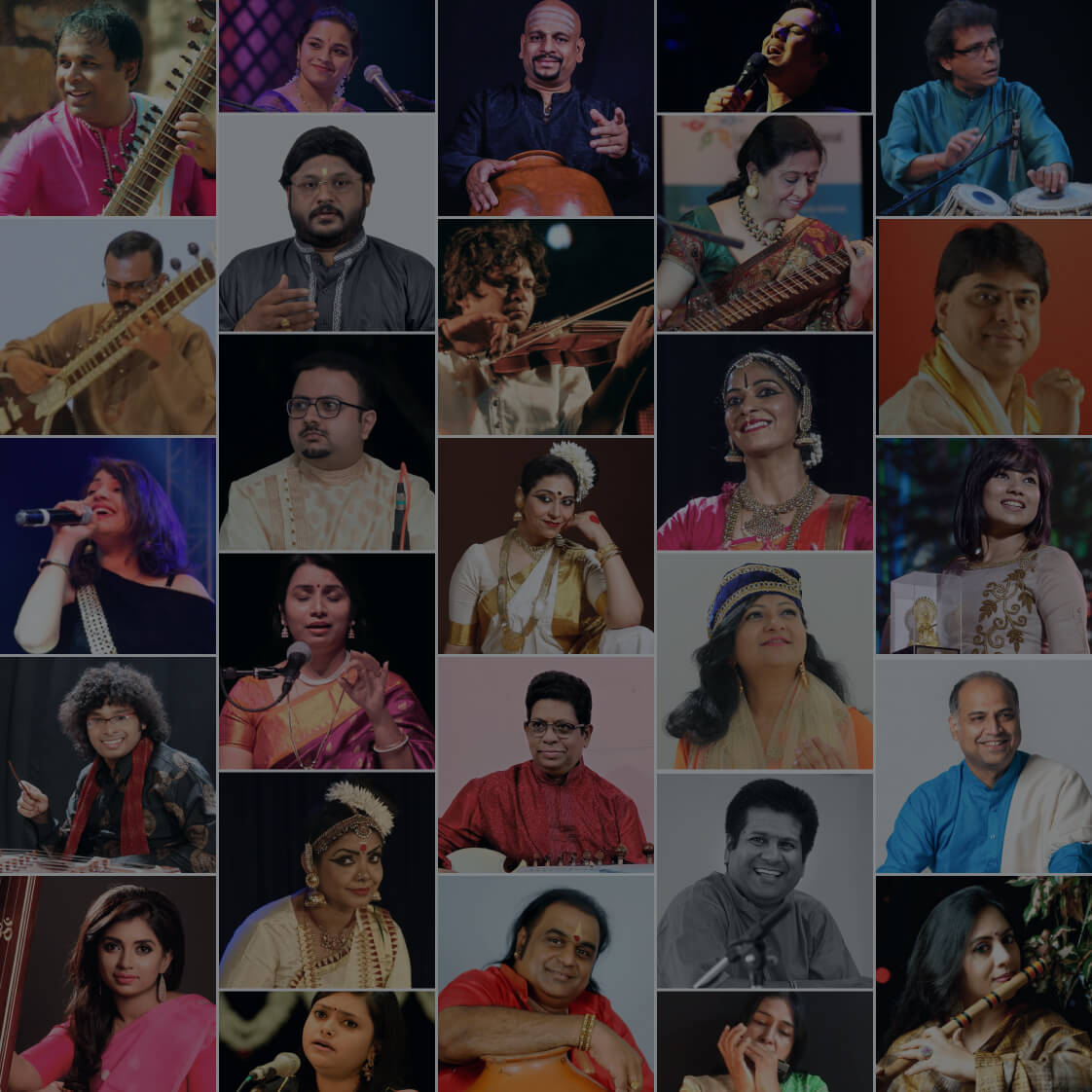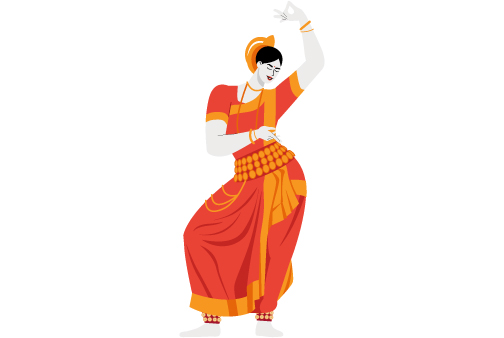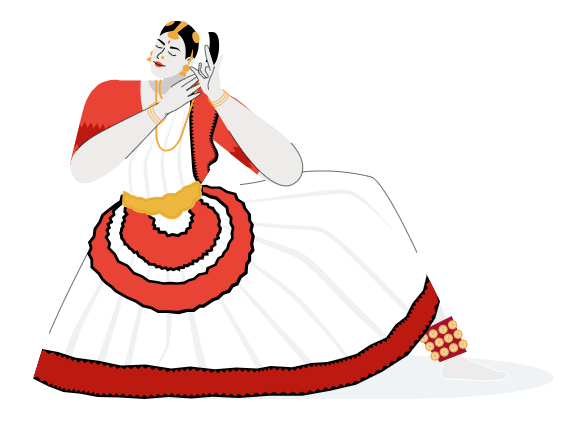Kuchipudi Overview
Kuchipudi dance is a classical Indian dance form that originated in the state of Andhra Pradesh in India. It is named after the village of Kuchipudi in Andhra Pradesh, where it was first performed.
The dance form is characterized by its intricate footwork, graceful movements, and subtle facial expressions. It incorporates both pure dance (Nritta) and expressive dance (Nritya) elements, as well as storytelling through dance (Natya).
Kuchipudi has a rich history, with its origins dating back to the 3rd century BCE. It was originally performed by a group of itinerant actors known as Bhagavathalu, who would travel from village to village, performing plays and dances based on Hindu mythology.
Over time, Kuchipudi evolved into a more refined and sophisticated art form, with the development of a distinct style and technique. Today, it is recognized as one of the eight classical dance forms of India and is performed both within India and internationally.
Kuchipudi performances typically begin with an invocation to the gods, followed by a series of pure dance sequences, expressive dance sequences, and storytelling through dance. The themes of the performances often draw from Hindu mythology, with the dancers portraying various gods, goddesses, and other mythological characters.
Kuchipudi Dance History

Like any other Indian traditional dance form the evolution of Kuchipudi has been remarkable.
Ancient:
The origins of Kuchipudi can be traced back to ancient times, with its roots dating back to the Natyashastra, a Sanskrit treatise on performing arts that were written around the 2nd century BCE. The Natyashastra laid down the basic principles of dance, music, and drama, and provided a foundation for the development of classical Indian dance forms.
Kuchipudi, in particular, has been associated with the Bhagavathalu, a group of itinerant actors who travelled from village to village, performing plays and dances based on Hindu mythology. These actors were said to have originated from the village of Kuchipudi in Andhra Pradesh, which is why the dance form is named after the village.
Medieval:
During the medieval period, Kuchipudi underwent a period of significant development and refinement. The Bhagavathalu continued to perform and refine their art, and Kuchipudi began to emerge as a distinct dance form with its own style and technique.
In the 15th century, the great poet and musician, Siddhendra Yogi, played a major role in the development of Kuchipudi. He is credited with transforming the dance form from a simple folk art to a sophisticated and refined classical dance form. Siddhendra Yogi also wrote several plays and dance dramas, which remain an integral part of the Kuchipudi repertoire to this day.
Modern:
In the modern era, Kuchipudi has continued to evolve and adapt to changing times. In 1958, the Kuchipudi Art Academy was established in Andhra Pradesh, with the aim of promoting and preserving the dance form. The academy has played a key role in training new generations of Kuchipudi dancers and ensuring that the art form remains alive and vibrant.
Today, Kuchipudi is recognized as one of the eight classical dance forms of India and is performed both within India and internationally. The dance form has also been adapted to suit modern sensibilities, with choreographers and dancers exploring new themes and styles while staying true to the traditions and principles of Kuchipudi.
Principles of Kuchipudi
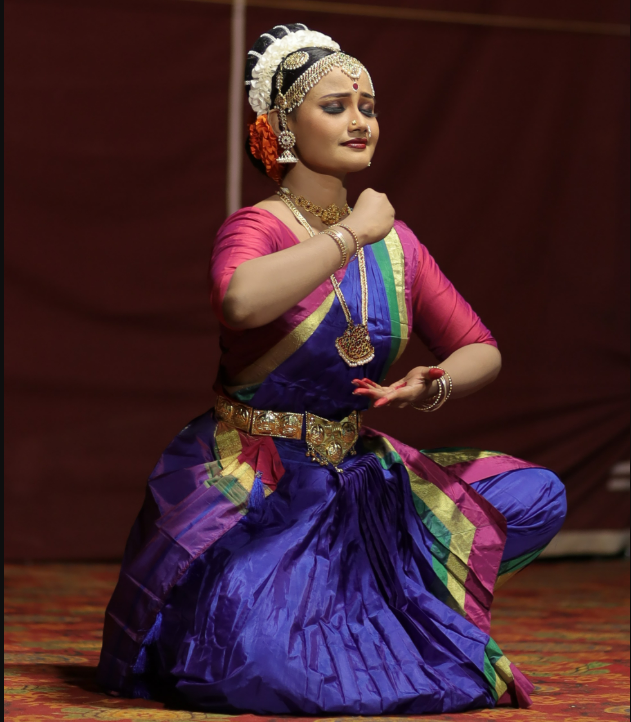
The dance form is based on several key principles that are fundamental to its practice and performance. Here are some of the main principles of Kuchipudi:
- Tala and Layam: Kuchipudi is performed to the rhythm of a specific beat or tala, which is set by the accompanying musicians. The dancer must have a strong sense of timing and must be able to maintain the rhythm of the tala throughout the performance. The tempo or speed of the rhythm is also important, and the dancer must be able to adapt their movements to match the pace of the music.
- Abhinaya: Abhinaya is the art of expression through gestures and facial expressions. In Kuchipudi, the dancer must be able to convey emotions and tell stories through their movements and expressions. Abhinaya is a key element of the dance form and requires years of practice and training to master.
- Natya: Kuchipudi is not just a pure dance form but also involves storytelling through dance or Natya. The dancer must be able to portray characters from Hindu mythology and bring them to life through their movements and expressions. The stories are often accompanied by music and sung or spoken word, and the dancer must be able to synchronize their movements with the music and dialogue.
- Rasa: Rasa is the emotional flavour or essence of a performance. In Kuchipudi, the dancer must be able to convey the appropriate rasa or emotion for each scene or character. The eight Rasas or emotions are love, joy, anger, courage, sorrow, disgust, fear, and wonder.
- Lasya and Tandava: Kuchipudi involves a balance between two aspects of dance - Lasya and Tandava. Lasya is the graceful and fluid aspect of dance, while Tandava is the more energetic and dynamic aspect. The dancer must be able to blend these two aspects together to create a harmonious and balanced performance.
- Costume and Makeup: The costumes and makeup worn by Kuchipudi dancers are an integral part of the dance form. The costumes are usually brightly coloured and ornate and are designed to enhance the beauty and grace of the dance movements. The makeup is also important, with the dancer using facial makeup to highlight their expressions and emotions.
Kuchipudi Compositions
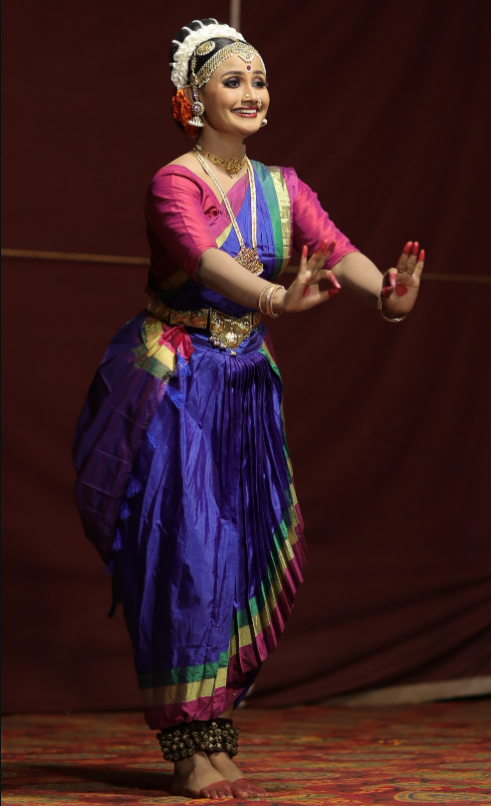
These compositions include both traditional pieces as well as newer works created by modern choreographers. Here are some of the main types of compositions in Kuchipudi:
- Varnam: Varnam is a complex and elaborate composition that is the centrepiece of a Kuchipudi performance. It combines elements of pure dance, storytelling, and expression, and is performed in two parts - the Sahitya or lyrical section, and the Swara or rhythmic section. Varnams are often based on themes from Hindu mythology, and require years of training and practice to master.
- Tillana: Tillana is a fast-paced and energetic composition that showcases the dancer's skill and agility. It is performed to a specific rhythmic pattern, and involves intricate footwork and quick movements of the hands and body. Tillanas are often accompanied by lively music and are a popular feature of Kuchipudi performances.
- Padam: Padam is a composition that focuses on expressing emotions through gestures and facial expressions. It is performed to a slow and melodious tune, and often tells a story or conveys a particular mood or emotion. Padams are an important part of the Kuchipudi repertoire and require a high level of skill and sensitivity to perform.
- Javali: Javali is a light-hearted and playful composition that is typically performed by female dancers. It combines elements of dance and music, and often features themes of love and romance. Javalis are known for their fast-paced footwork and lively movements, and are a popular feature of Kuchipudi performances.
- Sabdam: Sabdam is a composition that combines elements of pure dance and storytelling. It is usually performed to a catchy and rhythmic tune and often features themes of love and devotion. Sabdam are popular among audiences for their lively and entertaining nature.
- Keertana: Keertana is a devotional composition that is typically performed as a prayer or offering to a Hindu deity. It combines elements of dance and music, and often features repetitive chanting of the deity's name. Keertanas are an important part of the Kuchipudi repertoire and are often performed as a prelude to other compositions.
Famous Kuchipudi Dancers

Here are some of the most well-known and famous Kuchipudi dancers:
- Padma Bhushan Dr Vempati Chinna Satyam: Dr Vempati Chinna Satyam is widely considered to be one of the greatest Kuchipudi dancers and choreographers of all time. He was a disciple of the legendary Kuchipudi guru, Tadepalli Perayya, and went on to establish the Kuchipudi Art Academy in Chennai, which has trained many of the top Kuchipudi dancers in the world.
- Padma Bhushan Dr Sobha Naidu: Dr Sobha Naidu is another renowned Kuchipudi artist who has made significant contributions to the dance form. She has performed extensively in India and abroad and has been recognized with several prestigious awards for her work, including the Padma Shri and the Sangeet Natak Akademi Award.
- Dr Ananda Shankar Jayant: Dr Ananda Shankar Jayant is a prominent Kuchipudi dancer, choreographer, and scholar who has been instrumental in promoting the dance form and raising awareness about its history and cultural significance. She is the recipient of several awards, including the Padma Shri and the Sangeet Natak Akademi Award.
- Vyjayanthi Kashi: Vyjayanthi Kashi is a renowned Kuchipudi artist who has been performing for over four decades. She has trained under several of the leading Kuchipudi gurus and has developed a unique style that blends traditional Kuchipudi with contemporary elements.
- Raja Radha Reddy: Raja Radha Reddy is a celebrated Kuchipudi artist who has performed extensively in India and abroad. He is known for his powerful and dynamic style of dance and has been recognized with several awards, including the Padma Shri and the Sangeet Natak Akademi Award.
- Uma Muralikrishna: Uma Muralikrishna is a prominent Kuchipudi artist who has been performing and teaching for over three decades. She is known for her fluid and graceful style of dance and has been recognized with several awards for her contributions to the art form.
Kuchipudi is a classical Indian dance form that originates from the state of Andhra Pradesh. It is named after the village of Kuchipudi in Andhra Pradesh, where it was developed.
The Hindu god Krishna is considered the deity associated with the Kuchipudi dance form. Kuchipudi is a classical Indian dance style that originated in the village of Kuchipudi in Andhra Pradesh and is rooted in the Vaishnavism tradition, which focuses on the worship of Krishna. It is a dance-drama performance art that often depicts stories and myths about Krishna.
Kuchipudi, a classical Indian dance form, originated in the village of Kuchipudi, in the Krishna district of Andhra Pradesh, India. It evolved from a tradition of dance-dramas known as Yakshagana. The dance form is deeply rooted in religious and mythological themes, particularly those related to Lord Krishna.
Bharatanatyam is generally considered older than Kuchipudi. Bharatanatyam is believed to have a history of at least 2,000 years, with roots in ancient Tamil Nadu temple traditions. Kuchipudi, while also rooted in South India, is considered a younger form, formalized a few centuries ago, with its origins in Andhra Pradesh.
Here are some of the most well-known and famous Kuchipudi dancers: 1) Padma Bhushan Dr Vempati Chinna Satyam, 2) Padma Bhushan Dr Sobha Naidu, 3) Dr Ananda Shankar Jayant, 4) Vyjayanthi Kashi, 5) Raja Radha Reddy, and 6) Uma Muralikrishna.

